Ireland’s main transport network was once the steam powered railway engines, which serviced the length and breadth of the country. Read about all about the Railway Museums of Ireland in our informative guide:
West Cork Model Railway Village 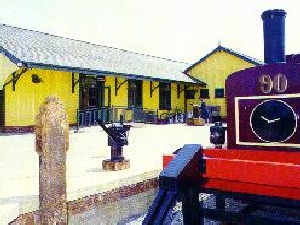
Enjoy a visit to the West Cork Model Railway Village - the first of its kind in Ireland. Follow the route of a miniaturised version of the now defunct West Cork Railway and “Step back in time” to experience the way of life in West Cork during the 1940′s. View buildings of architectural and historical interest which are featured within their natural terrain, settings which range from grassy hillsides to inland waterways and coastal inlets. Discover a world of forges, markets, fairs, “old time” water powered industries, World War Two rationing and West Cork’s maritime heritage.
Some of the key points of the Museum are:
- Miniature Town & Railway Scenes
- Indoor Play area
- Party Packages Available
- Train rides available
Clonakilty can be found about a 45 minute drive west of Cork city. Take the N71 from Cork city via Bandon. You can also get a bus from Cork bus station to Clonakilty.
Downpatrick Steam Railway 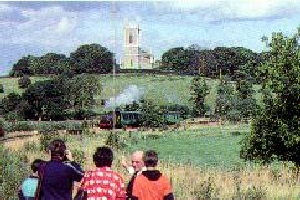
Climb on board for a short train ride - or travel further afield on a special mainline steam excursion. Many engines and coaches are on display in transport museums and railway centres, with memorabilia from the golden age of steam. The first railway in Ireland opened in 1834, and the network quickly reached into all corners of the island. By 1920 almost 3,500 miles of track threaded the countryside and no Irish town was more than 10 miles from a railway station.
Ireland’s national railway gauge is 5ft 3 inches. This, together with the widespread use of the 3 ft narrow gauge, makes Irish railways quite distinctive.
A restored section of the BCDR Downpatrick-Ardglass branch line runs from Market St, Downpatrick, along one mile of standard gauge track, to the grave site of Magnus Barefoot, a viking king. Working engines include steam locomotive Guinness and two E-class Maybach diesels built in Dublin for CIE. Restored signal cabin. Photographic display and model railway in station house. The Golfers’ Saloon was used between Belfast and the Royal County Down Golf Club, Newcastle.
Belturbet Railway Station 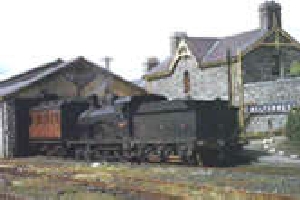
Belturbet, one of Cavan’s most attractive and historic towns on the River Erne, is the scene of an exciting heritage tourism project. The old GNR cutstone railway station, built in 1885 has been fully restored and now houses an interesting exhibition telling the story of the railway age here, and a fascinating collection of railway memorabilia.
Old rolling stock is currently being restored and will be on view to visitors. An audio visual show and local craft display will shortly be added. Other facilities include conference facilities and superior budget accommodation.
The full range of facilities at Belturbet Station are as follows:
The Railway Visitor Centre, located in the former waiting room of the original cut-stone station building, is of special interest to railway enthusiasts, historical and heritage groups, school groups, families and day visitors. The Visitor Centre tells the story of Belturbet Station during the Railway Age and houses an interesting display of railway memorabilia and archival material. Our audiovisual show features original footage of the Cavan & Leitrim Railway from the 1950s. It also outlines the history of the restoration of Belturbet Station which began in 1995. Group bookings are welcome.
Conference facilities / meeting rooms are available at Belturbet Station. The original cutstone GNR Goods Store has been restored to a very high standard. It has a seating capacity of approximately 100 people (theatre style), and serves as a very attractive venue for business, social or educational/training groups to hold meetings, conferences or workshops.
On-site catering and refreshments provided for visitors. Extensive coach and car-parking is available on site.
Belturbet Station was served by the broad gauge Great Northern Railway Company and the narrow gauge Cavan & Leitrim Railway Company from June 1885 until its closure in March 1959. After its closure in 1959, the buildings fell derelict and remained so until they were acquired by Belturbet Community Development Association in 1995. The local community was very active in various fundraising campaigns to finance the restoration of the Station. The restoration project has also been generously funded by Peace & Reconciliation, FÁS, LEADER, IFI, InterReg and Cavan County Enterprise Board.
The restoration project, and ancillary developments, answer a need identified in the County Cavan 5-Year Tourist Development Plan for a flagship tourist destination in the county, and as such is destined to become a strong tourism feature and important amenity for the local community and visitors alike.
Foyle Valley Railway Centre 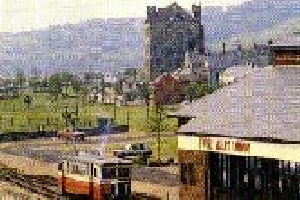
Foyle Valley Railway Centre hosts an exciting and fascinating collection of railway artefacts including the majestic County Donegal Railway steam locomotive ‘Columbkille’ and diesel railcars No. 12 (1932) and No. 18 (1942). The museum celebrates the outstanding railway history of the city. The working diesel railcars run on a picturesque three-mile track through the nearby Riverside Park. Admission free. Train rides are available seasonally and charges apply (please telephone in advance to confirm availability). Group bookings/discounts available. Group booking outside the above hours may be available on request.
Steam Museum 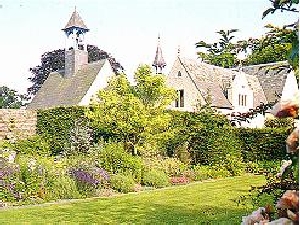
Climb on board for a short train ride - or travel further afield on a special mainline steam excursion. Many engines and coaches are on display in transport museums and railway centres, with memorabilia from the golden age of steam. The first railway in Ireland opened in 1834, and the network quickly reached into all corners of the island. By 1920 almost 3,500 miles of track threaded the countryside and no Irish town was more than 10 miles from a railway station. Ireland’s national railway gauge is 5ft 3 inches. This, together with the widespread use of the 3 ft narrow gauge, makes Irish railways quite distinctive.
The museum has a fine collection of model engines recording the development of the locomotive since the 18th century. Richard Trevithick’s Third Model, built 1797, is the oldest 4-wheeled self-propelled object in existence. Collection of full-size stationery engines working under ‘live steam’ includes early beam engines and a 1920 marine 3-cylinder engine. Fully restored marine from the SS Divis of Belfast. Multimedia and hands-on areas. Tea house, gift shop.
The Lartigue Monorailway
The Lartigue Monorail was a unique railway line which ran from Listowel to Ballybunion between 1888 & 1924. Reputed to be the only one of its type in the world to commercially operate, it was characterised by an engine and carriages which ran along a single rail standing 3 feet off the ground through the centre of the train. Designed by French engineer Charles Lartigue, you can now be part of history and experience this unique mode of transport at the reconstructed Lartigue Monorailway, Listowel.
West Clare Railway Engine, Moyasta
Visitors to the museum will be able to see there the inscribed spade with which Charles Stewart Parnell turned the first sod for the laying of the West Clare Railway. The west Clare project was initiated in 1883 and construction began in 1885. The railway, which opened for business in 1887, ran at first from Ennis to Miltown Malbay through Ennistymon. It was afterwards extended to Kilkee and Kilrush, serving Lahinch and other coastal towns on the way.
One of its engines, the Slieve Callan, has been preserved and may be seen at the railway station and bus depot. The engine, on a masonry pedestal, is known as the Percy French Memorial - one of his best known songs celebrated the West Clare Railway as it was in its hey-day. The railway was discontinued in 1961.
The Fry Model Railway 
The Fry Model Railway is a unique collection of handmade models of Irish trains, from the beginning of rail travel to modern times. One of the world’s largest miniature railway, the exhibition is unique in that it is a working railway covering an area of 2,500 sq. feet.
Situated in the beautiful grounds surrounding Malahide Castle, this delightful collection is a treat for railway enthusiasts, children and adults alike.
The beautifully engineered models are from a collection originally built up in the 1920s and 1930s by Cyril Fry, a railway engineer and draughtsman, with each piece assembled with the finest attention to detail.
Situated in the beautiful grounds surrounding Malahide Castle, this delightful collection is a treat for railway enthusiasts, children and adults alike.
